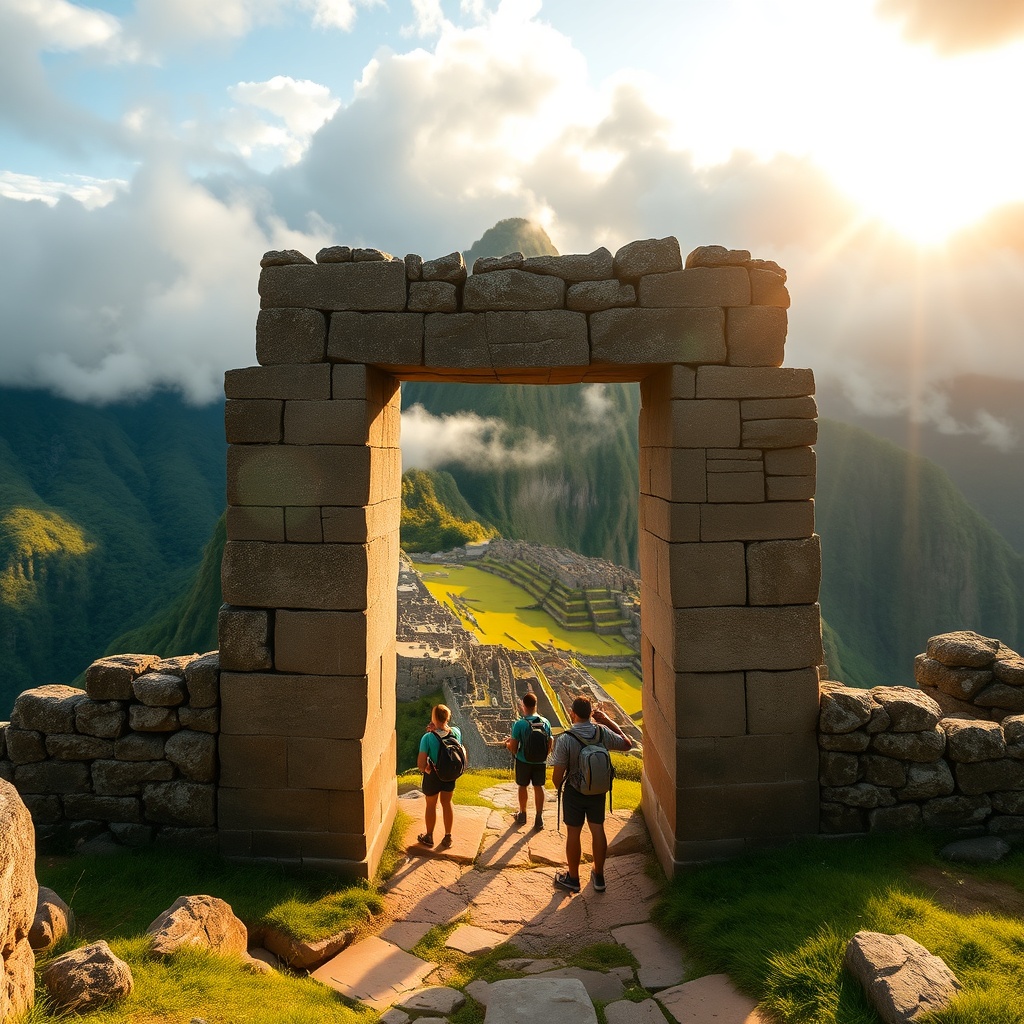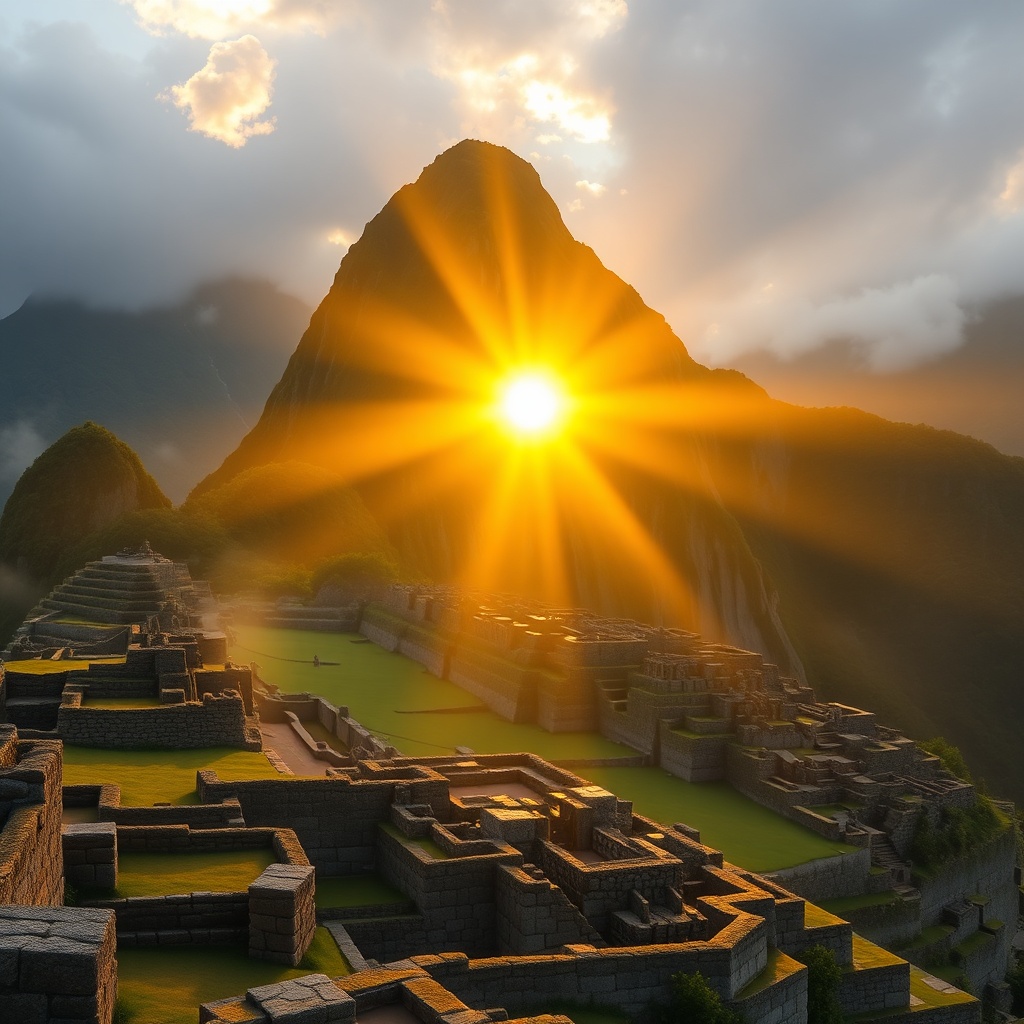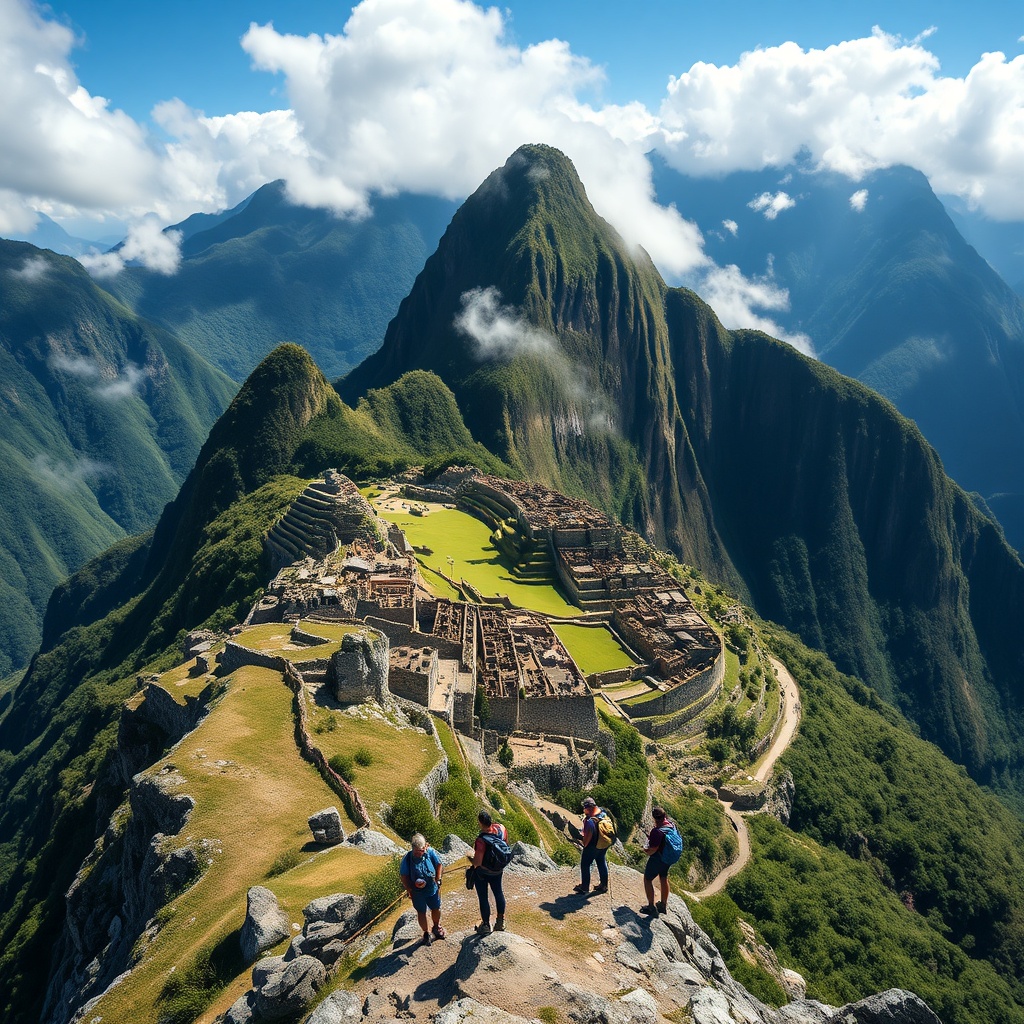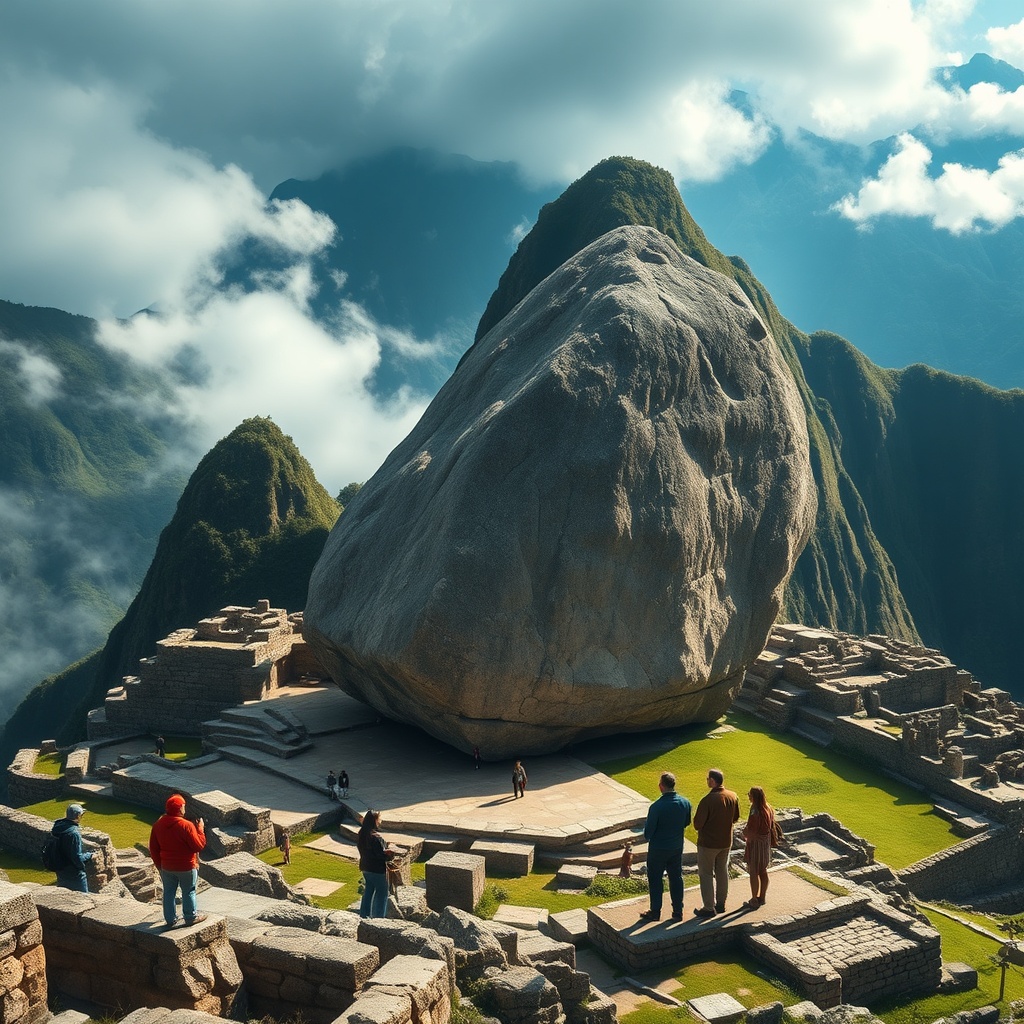Exploring the Wonders of Machu Picchu
Have you ever dreamed of standing above the clouds, gazing upon a lost city wrapped in mist? If you crave adventure, ancient secrets, and breathtaking scenery, then Machu Picchu is a destination that will ignite your imagination. In the coming paragraphs, we’ll transport you onto winding Andean trails, into mysterious ruins crafted centuries ago, and deep into the heart of Incan legends. Whether you’re an intrepid traveler, a history buff, or a nature lover, this guide will uncover hidden gems and practical tips for exploring Peru’s most iconic wonder. Join our vibrant community—even if Machu Picchu is on your distant bucket list, prepare to be inspired to turn that dream into reality. Let’s begin our journey together and unlock the magic of one of the world’s most unforgettable hotspots!

The Sun Gate, or Inti Punku, stands as one of the most legendary entryways to Machu Picchu, shrouded in both history and mystery. This ancient stone gateway, perched high above the citadel, was once the main entrance for those arriving via the Inca Trail. As you ascend the final stretch of the trail, the Sun Gate emerges from the mist, offering a breathtaking first glimpse of Machu Picchu bathed in golden morning light.
For centuries, the Sun Gate has symbolized a threshold between worlds—from the familiar to the sacred, from the present to the echoes of the Inca Empire. Stepping through Inti Punku, travelers experience a sense of awe and reverence, feeling the weight of history and the ingenuity of the ancient civilization that built these stones with astronomical precision. The alignment of the Sun Gate with the sunrise during the solstice is a testament to the Incas' deep connection with nature and the cosmos.
But beyond its historical and spiritual significance, the Sun Gate offers practical insights for modern life. It reminds us of the importance of gateways—those moments of transition and transformation in our own journeys. Just as the Incas designed the Sun Gate as a place of arrival and reflection, we too can seek out or create gateways in our lives: opportunities to pause, gain perspective, and appreciate how far we've come.
- Perspective and Mindfulness: The panoramic view from the Sun Gate encourages us to step back and see the bigger picture, both literally and metaphorically. In daily life, taking time to reflect can help us make better decisions and foster gratitude.
- Embracing Change: The Sun Gate marks the end of a challenging journey and the beginning of a new adventure. Embracing transitions—whether a new job, relationship, or personal goal—can lead to growth and discovery.
- Respect for Heritage: The preservation of Inti Punku teaches us the value of honoring our own histories and cultures, learning from the past to build a better future.
| Aspect | Insight | Life Application |
|---|---|---|
| Historical Significance | Ancient gateway to Machu Picchu | Recognize the importance of beginnings and endings |
| Spiritual Meaning | Alignment with the solstice sunrise | Find meaning in nature and daily rituals |
| Modern Symbolism | Gateway as a metaphor for change | Embrace transitions in personal growth |
In the spirit of Harmon's storytelling circle, the journey to the Sun Gate mirrors our own cycles of departure, challenge, revelation, and return. We leave the comfort of the known, face the climb, and are rewarded with a new vision—one that forever changes how we see ourselves and the world.
So, whether you are planning your own trek to Machu Picchu or simply seeking inspiration for your life's journey, let the Sun Gate remind you: every threshold holds the promise of wonder, discovery, and transformation.

Nestled within the heart of Machu Picchu, the Temple of the Three Windows stands as a silent witness to the ingenuity and spiritual depth of the Inca civilization. This remarkable structure is not just an architectural marvel, but a profound symbol of Incan cosmology and worldview.
The three trapezoidal windows, carved meticulously into massive stone walls, are believed to represent the three realms of existence in Inca belief: Hanan Pacha (the upper world of gods and celestial beings), Kay Pacha (the world of the living), and Ukhu Pacha (the underworld of ancestors and spirits). This triad is central to Andean philosophy, emphasizing the interconnectedness of all life and the cyclical nature of existence.
Why does this matter for us today?
Understanding the symbolism behind the Temple of the Three Windows can inspire us to reflect on our own place in the universe.
The Incas saw themselves as stewards of a balanced world, living in harmony with nature and the cosmos.
In a modern context, this ancient wisdom encourages us to seek balance between our spiritual, physical, and emotional lives.
Key Insights for Modern Life:
- Interconnectedness: Just as the Incas believed in the unity of all realms, we too are part of a larger whole—our actions ripple through families, communities, and the environment.
- Respect for Nature: The Temple’s alignment with the sunrise and the surrounding mountains reminds us to honor and protect the natural world.
- Balance and Harmony: The three windows invite us to cultivate harmony within ourselves and with others, striving for a life that integrates mind, body, and spirit.
| Incan Realm | Symbolic Meaning | Modern Application |
|---|---|---|
| Hanan Pacha | Upper world, aspirations, dreams | Setting goals, connecting with purpose |
| Kay Pacha | Earthly existence, daily life | Mindfulness, presence, relationships |
| Ukhu Pacha | Inner world, roots, ancestors | Self-reflection, honoring heritage |
Visiting the Temple of the Three Windows is more than a historical experience; it is a journey into the heart of a culture that revered the balance of all things. When you stand before those ancient stones, you are invited to pause, breathe, and contemplate your own journey through the worlds of aspiration, presence, and introspection.
Did You Know?
The Temple is strategically positioned to capture the first rays of the morning sun during the solstice, illuminating the windows and symbolizing the renewal of life—a testament to the Incas’ astronomical knowledge and spiritual devotion.
In summary, the Temple of the Three Windows is a timeless reminder that ancient wisdom can still guide us toward a more balanced, meaningful, and connected life. As you explore Machu Picchu—whether in person or through stories—let the echoes of Incan cosmology inspire your own journey.

Have you ever wondered what it feels like to stand above the clouds, gazing down at the legendary ruins of Machu Picchu from a bird’s-eye view? Climbing Huayna Picchu is more than just a hike—it's a journey through history, challenge, and awe-inspiring natural beauty.
Following the classic storytelling arc, our adventure begins with a call to adventure: the magnetic pull of the towering peak behind Machu Picchu. The climb up Huayna Picchu is not for the faint of heart. The path is steep, narrow, and often shrouded in mist, making every step a test of both physical endurance and mental resolve. Yet, this challenge is what makes the journey so rewarding. As you ascend, the world below transforms—lush jungle, ancient terraces, and the winding Urubamba River all come into view, reminding you of the mysteries and marvels that the Incas left behind.
Preparation is key for this adventure. Make sure to secure your Huayna Picchu permit in advance, as only a limited number of climbers are allowed each day. Bring plenty of water, sturdy shoes, and a spirit ready for discovery. The trail can be slippery, especially after rain, so patience and caution are your best companions.
- The Ascent: The first stage is a winding stone staircase, surrounded by thick vegetation and the occasional glimpse of Machu Picchu below. Your heart pounds with excitement and exertion.
- The Challenge: As you climb higher, the path narrows and the drop-offs become more dramatic. Here, you face your own doubts and fears—will you make it to the top?
- The Reward: Reaching the summit, you are greeted by a 360-degree panorama. The ruins of Machu Picchu appear like a miniature city, framed by the Andes and swirling clouds. This is the moment of transformation—your perspective on both the landscape and yourself shifts.
From the summit, the views are nothing short of magical. The ancient city sprawls below, its intricate stonework and terraces forming a patchwork of history. The surrounding mountains, often capped with mist, add a sense of mystery and grandeur. It’s a place where you can pause, breathe deeply, and feel connected to something timeless.
| Tip | Why It Matters |
|---|---|
| Start Early | Morning climbs offer cooler temperatures and fewer crowds. |
| Pack Light | Every extra pound makes the steep ascent harder. |
| Take Breaks | Pause to enjoy the scenery and acclimate to the altitude. |
For many, the climb up Huayna Picchu is a life-changing experience. It’s a chance to push beyond your comfort zone, to witness the ingenuity of the Inca civilization, and to be reminded of the power of nature. Whether you’re a seasoned hiker or a curious traveler, this journey will leave you with stories to tell and memories to cherish.
So, are you ready to answer the call and climb to the top of the world? Huayna Picchu awaits, promising not just a view, but a new perspective on adventure, history, and yourself.

In the heart of Machu Picchu, the Sacred Rock stands as a silent witness to centuries of wonder, spirituality, and unanswered questions. This massive monolith, carved with remarkable precision, has captivated explorers, historians, and travelers alike, drawing them into the enigma of the Inca civilization.
Why did the Incas choose this particular stone? What secrets are hidden in its perfectly aligned edges and mysterious shapes? The Sacred Rock is more than just a geological feature—it is a symbol of connection between the earth and the cosmos, a focal point for rituals, and a testament to the advanced knowledge of the ancient builders.
Imagine yourself as a modern traveler, standing at the threshold of Machu Picchu. The world outside is filled with digital noise and daily routines. But as you approach the Sacred Rock, you step into a realm where time seems to stand still, and every stone whispers stories from the past.
The allure of the Sacred Rock beckons. You are drawn to its presence, curious about its purpose and the mysteries it guards. You feel the urge to look closer, to seek meaning beyond what is visible.
Doubt creeps in. Can a single stone truly hold the answers to ancient riddles? The stories seem far-fetched, and the world offers logical explanations. Yet, the pull of the unknown remains irresistible.
A local guide appears, sharing tales of the Incas’ reverence for the Sacred Rock. You learn about its alignment with the surrounding mountains, its role in ceremonies, and the spiritual energy believed to emanate from its surface. The guide’s wisdom ignites your curiosity further.
You decide to embrace the mystery. Touching the stone, you feel a connection to the past. The carvings, the shadows, and the landscape merge, inviting you to see the world through Inca eyes.
As you explore, you encounter other seekers—some skeptical, some deeply spiritual. You debate theories: Was the Sacred Rock an astronomical tool, a ceremonial altar, or a map of the surrounding peaks? Each perspective challenges your assumptions and deepens your appreciation for the site’s complexity.
In a quiet moment, you sit before the Sacred Rock, letting the silence envelop you. The magnitude of history, the weight of unanswered questions, and the awe of standing where ancient priests once stood fill you with humility and wonder.
You leave the Sacred Rock not with all the answers, but with a deeper sense of connection—to the Incas, to the earth, and to the mysteries that make life so fascinating. The experience enriches your journey, reminding you that some wonders are meant to be pondered, not solved.
- Cultural Heritage: It preserves the spiritual and architectural legacy of the Inca civilization.
- Inspiration: The mystery fuels curiosity and creativity, encouraging us to seek meaning in our own lives.
- Mindfulness: Standing before the Sacred Rock, you are reminded to pause, reflect, and appreciate the beauty of the unknown.
| Aspect | Insight | Life Benefit |
|---|---|---|
| Symbolism | Represents harmony between nature and humanity | Encourages respect for the environment |
| Mystery | Invites exploration and open-mindedness | Fosters curiosity and lifelong learning |
| Legacy | Connects us to ancient wisdom | Promotes humility and gratitude |
In summary, the Sacred Rock of Machu Picchu is not just a relic of the past. It is a living mystery, a source of inspiration, and a reminder that the greatest journeys are those that challenge us to seek, to wonder, and to grow. Next time you find yourself at a crossroads, remember the Sacred Rock—and let its mysteries guide you toward new horizons.